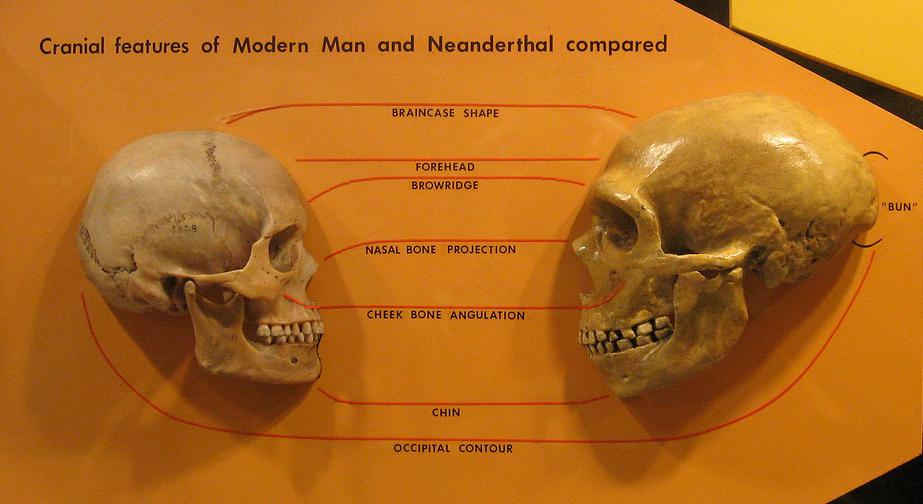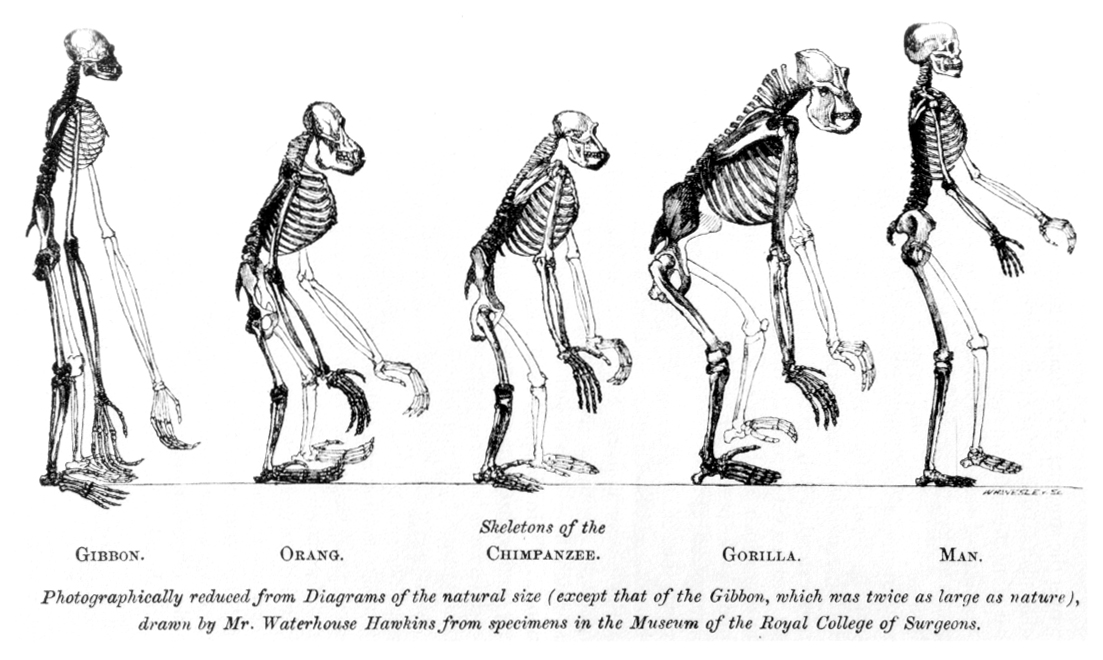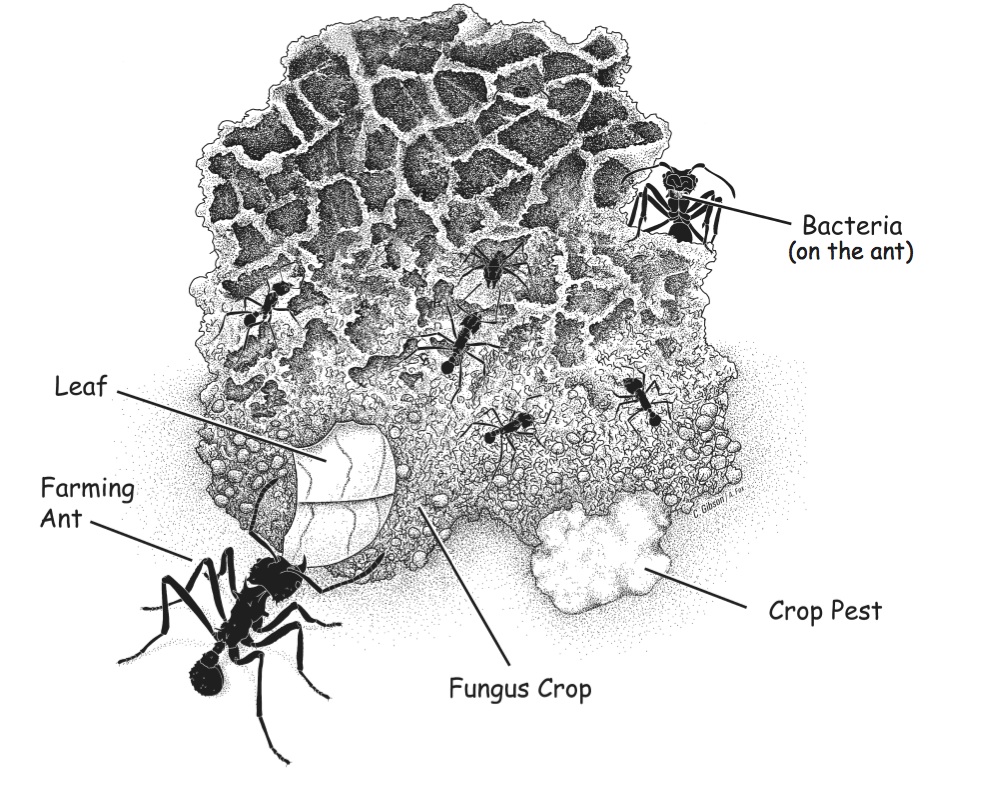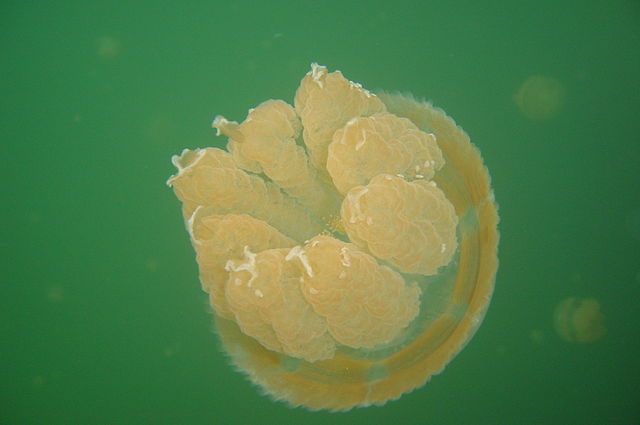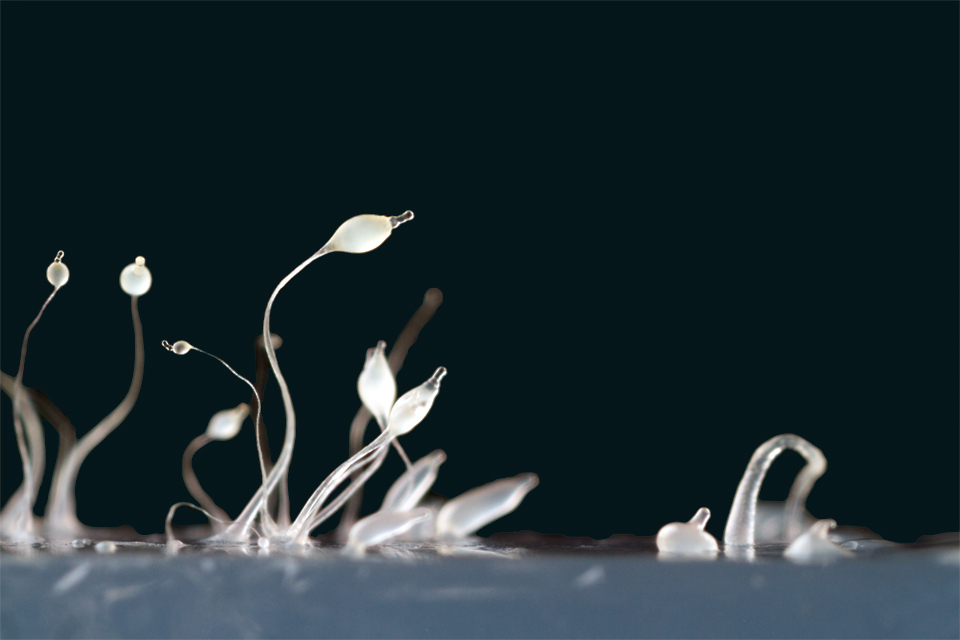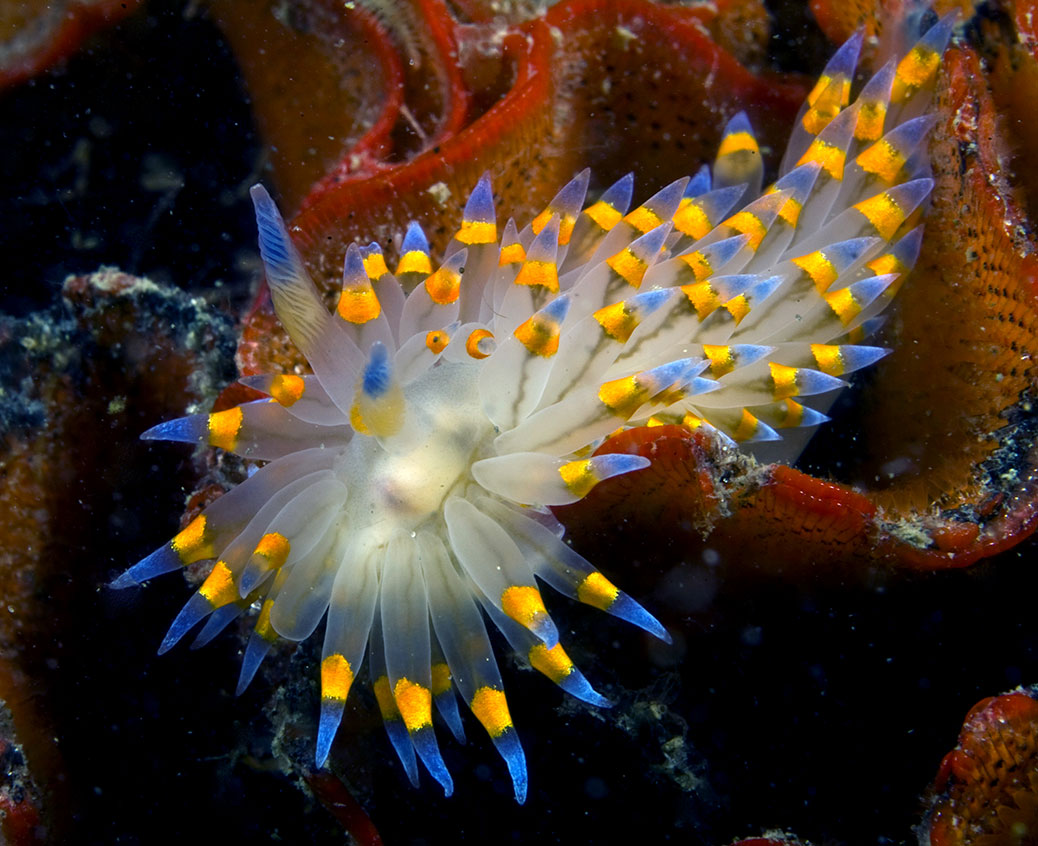In my previous post, I discussed the evidence and arguments that led to the widespread acceptance of the “Recent Out-of-Africa” theory of human origins. Anthropologists in the 19th and 20th centuries defined the scope of the questions about our ancestry – Where did we originate? How long have we existed as a species? – and began to answer them using fossil evidence. However, …
Decoding the Stories of our Ancestors – Pt. 1
Main picture: Frontispiece to Huxley’s “Evidence as to Man’s Place in Nature” (1863). From Wikimedia Ever since a skeleton from the Neander Valley was recognized as an extinct relative of humans in 1856, people have been captivated by the mysterious history of migration, murder, and mating by which Homo sapiens conquered the world. For a long time, a few scattered fossils and …
Too good to be true: Leafcutter ants pt. 2
Main picture: Cara Gibson for NSTA The scientific process can be very messy indeed, and what originally seem like rock-solid conclusions can later turn out to be specious. Scientists very rarely straight-up lie about their findings for fame and glory; institutional and cultural oversight within science keep the rascals in check. More often, the effect that was originally (honestly) measured later turns …
Spectacular Symbiosis: Leafcutter Ants pt. 1
Of all the animals with which we have the honor of sharing the world, leafcutter ants have to be amongst the most impressive. Over the last ~50 million years, the 47 species of leafcutter ants have achieved remarkable evolutionary success, extending their range from Mexico to Argentina. They are the dominant herbivores in the tropical Americas, and can be major agricultural pests, stripping small trees of their …
Spectacular Symbiosis: A Few Good Viruses
Viruses are one of the last great biological bogeymen facing modern humans. Fire, weapons, and a changing climate have tamed or killed off our ancient predators. For those lucky enough to have access to them, antibiotics have won a long, though fragile and temporary, reprieve from bacterial infections. However, the prospect of a new viral outbreak, for which we do …
Evolutionary Insights into Language and Culture
The verb “to spit” may be one of precious few words preserved from the common ancestor of all Eurasian languages, retaining largely the same sound and meaning for thousands of years. The word “huh,” as in “what did you just say,” has arisen in many languages around the world. These findings come from two of several recent studies that use methods developed in evolutionary biology to discuss the …
Spectacular Symbiosis: Golden Medusa
Isolated saltwater lakes on remote islands of the South Pacific serve as the stage for a surprising and beautiful daily dance. Spotted jellies or golden medusae (Mastigias papua) migrate west-to-east across their lakes every day, in huge, spectacular densities. Why? Like some other jellies, Mastigias harbor symbiotic algae in their tissues. These algae (in the group Zooxanthellae) are related to those found in …
Altruism and Cancer from a Slime Mold’s Perspective
Main photo: Alex Wild Multicellularity is an astonishing feat of communal sacrifice. With the exception of sperm and egg (the “germ line” cells), the 40 trillion cells currently in your body will dutifully perform their particular charge to maintain the whole, intricately arranging themselves to form your arteries, lungs, liver and brain, without ever having a chance to meaningfully reproduce. Many will die …
Truth, Beauty and Sea Slugs
*Main photo: Ken Bondy Check out this gorgeous photo gallery of sea slugs by National Geographic photographer David Doubilet! These sea slugs, called nudibranchs, have evolved zany colors for your personal enjoyment, and also to warn predators about the toxic compounds they contain. Some nudibranchs make these compounds themselves, but many extract and concentrate toxins from the sponges they eat. Retaining toxic compounds is far from …

